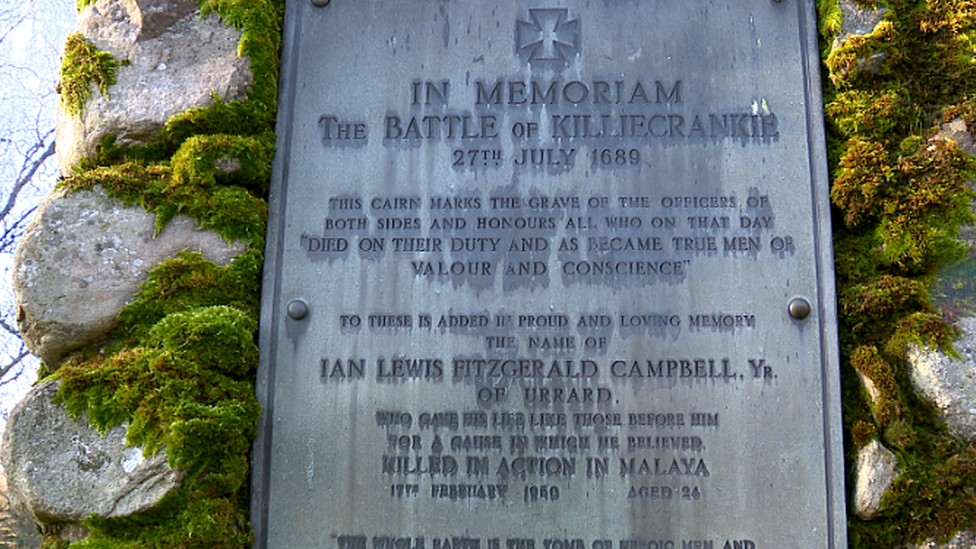Campaigners fight plan to dual A9 at Killiecrankie Battlefield
- Published

The proposal would widen the road at the site of the famous 1689 battle
Opponents of plans to upgrade the A9 at the site of a historic Highland Perthshire battle will take their concerns to a local public inquiry.
Part of the widened road will run through the Battle of Killiecrankie site, where Jacobite forces fought government troops in 1689.
It is part of a £3bn project to dual the road between Perth and Inverness.
Transport Scotland said it was "aware of the sensitivities" around the battlefield.
The agency said the existing A9 already runs through the Killiecrankie Battlefield and any widening will have "some impact" on the site.

The existing route already runs through the battlefield site
Eighty miles of the A9 is to be upgraded to dual carriageway in a massive project due to be completed by 2025.
It includes some 14 miles of road between Killiecrankie and Glen Garry.
The local public inquiry, which will be streamed on a web feed, external, begins later in Pitlochry.
Dr Arran Johnston, of the Scottish Battlefields Trust, said the proposed route would be "compounding the damage" done by the existing A9.
He said: "Our great concern is that the significance of the battlefield wasn't given adequate weight when the decisions were being made as to how this route would be put together.
"That means some of the areas where the most intense fighting took place right along the length of the Williamite battle line will be obliterated."

Dr Arran Johnston claims the new route will "compound the damage" done by the existing A9
The battle took place on 27 July 1689 between a Jacobite army under the command of John Graham of Claverhouse, 1st Viscount of Dundee, 'Bonnie Dundee', and a government army commanded by General Hugh Mackay.
Both armies were attempting to reach Blair Atholl to use it as a base for future operations.
The Jacobites are thought to have lost 800 men, with around 2,000 casualties among the government troops.
Artefacts from the battle were discovered during a survey of the A9 dualling in 2016.
Local campaigner James Bax said the dualling would put the new carriageway on top of where the actual fighting took place.
He said: "In doing that, we feel it degrades the current site unnecessarily.
"We do think there are ways to mitigate the current plans to make it easier for future generations to enjoy the battlefield."

About 2,800 men died in the Battle of Killiecrankie
A Transport Scotland spokesperson said: "We are aware of the sensitivities around what is an important battlefield, and site of historical and cultural significance."
The agency said it has been "engaging extensively" with the local community and key stakeholders since 2012.
It said a number of design refinements to "reduce land take" on the battlefield site have been made following feedback from Historic Environment Scotland and the local community.
The spokesperson said: "Ultimately, following detailed consideration of all objections made but not withdrawn, the Reporter will provide recommendations to the Scottish Ministers for their determination."